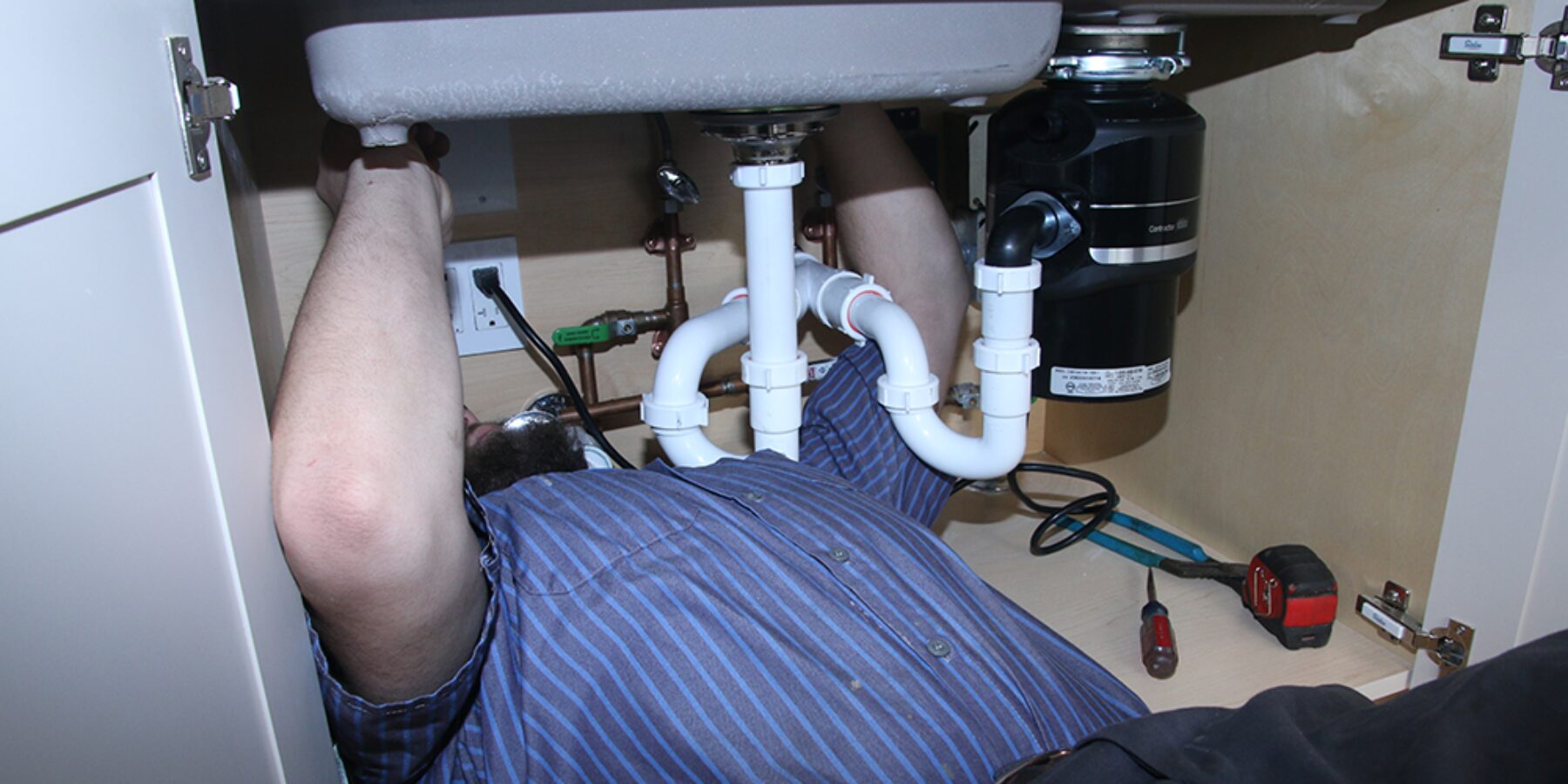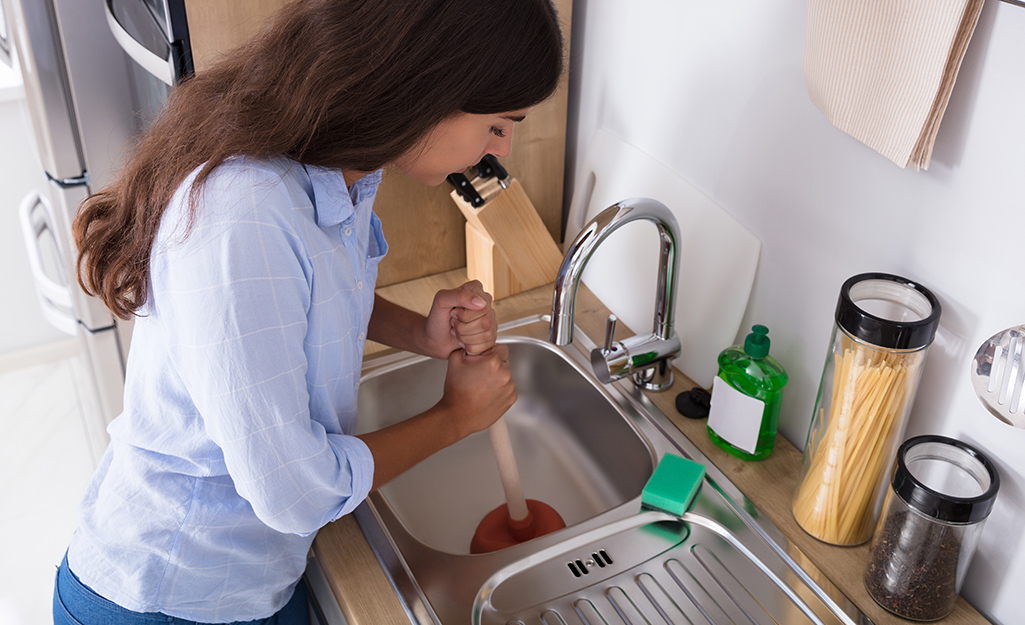Key Advice On How To Correct A Slow-Draining Sink
Key Advice On How To Correct A Slow-Draining Sink
Blog Article
This great article down below relating to Solved! How to Fix a Slow Sink Drain is incredibly captivating. Read it for your own benefit and decide what you think of it.

Introduction
We have actually all been there: You're cleaning your teeth or washing your hands, and you notice the water merging in the sink. Instead of swiftly swirling away, it lingers, transforming your once-refreshing morning routine into a mini swamp scene. A slow-draining sink isn't just aggravating; it's often a sign of bigger plumbing issues hiding underneath the surface area. Fortunately is that most slow-draining sinks can be taken care of with a little knowledge, a few basic tools, and some persistence. Prepared to tackle this job head-on? Allow's roll up our sleeves and dive right in.
Recognizing the Sources Of a Slow-Draining Sink
Prior to you start poking around in your pipelines, it aids to understand what might be creating the stagnation. Understanding the source makes it much easier to choose the ideal fix.
Usual Offenders Behind Slow Drain
So, what's obstructing things up? Generally, it's a mixture of daily particles-- think hair, soap scum, tooth paste residue, and leftover food bits. With time, these tiny bits gather and cling to the pipeline walls, gradually tightening the flow and making it harder for water to travel through. In many cases, mineral deposits from hard water can also contribute to the gunk, producing the excellent storm for stubborn clogs.
When is it Time to Act?
If you see the water draining pipes slower than common, it's an excellent idea to interfere earlier rather than later on. Waiting also long could lead to finish clogs, unpleasant smells, or even pipeline damages. If the water takes greater than a few secs to clean out after switching off the faucet, consider it a warning and get ready to put on your do it yourself hat.
Devices and Materials You'll Require
The right devices make all the distinction. Thankfully, you won't require a totally stocked plumber's van to do the job.
Crucial Tools for DIY Services
A plunger is your best starting point. A small, sink-sized plunger produces suction that can dislodge minor obstructions. For more persistent blockages, a drain serpent (often called a plumber's auger) functions marvels. A set of handwear covers, a flashlight, and maybe a set of safety safety glasses are additionally helpful.
Advised Cleaning Solutions
Light recipe soap and warm water can help break down oily accumulation. A mixture of cooking soft drink and vinegar is a time-tested home remedy, and enzymatic cleansers use an even more environment-friendly technique. Keep chemical drain cleaners as a last option, as they can be extreme on your pipes.
Safety And Security First: Precautions and Prep work
Before you launch into unclogging setting, think of safety. You're dealing with possibly unclean water and particles, so slip on a set of gloves. If you're making use of chemical cleaners, make certain the room is well-ventilated and comply with the guidelines on the label.
Protective Gear and Workspace Setup
Lay down some old towels or dustcloths around the sink location to catch splashes. Remove any type of products that could enter your means, like soap dispensers or toothbrush holders. Make certain you have excellent lights-- grab a flashlight if needed.
Step-by-Step Overview to Repairing a Slow-Draining Sink
Currently, allow's enter the nitty-gritty. This step-by-step process will lead you via basic strategies to recover your sink's water drainage.
Action 1: Get Rid Of and Tidy the Stopper
Often, the stopper (that tiny plug you lower to block water) is the very first perpetrator. Remove it thoroughly and wipe any type of hair or crud caught around its base. Rinse it completely prior to placing it back in place.
Action 2: Utilize a Bettor to Remove Debris
Got that bettor prepared? Position it over the drainpipe and provide it a few company pumps. The idea is to develop suction that can loosen up any clog. If you see little bits of debris drifting up, you get on the appropriate track.
Step 3: Attempt a Drainpipe Snake or Wire Hanger
If the plunger doesn't suffice, it's time to bring out the drainpipe serpent. Delicately feed it into the drain and spin as you go. You might really feel some resistance-- that's likely the blockage. Keep turning and drawing until you eliminate the blockage. If you don't have a drainpipe snake, a corrected cable wall mount can operate in a pinch.
Step 4: Apply a DIY Drainpipe Cleaner
An all-natural cleaner made from cooking soft drink and vinegar can break down recurring crud. Put half a cup of cooking soft drink right into the drain, complied with by half a cup of vinegar. Allow it fizz for about 15 mins, after that flush with hot water. This chemical reaction usually does wonders for minor obstructions.
Step 5: Reassemble and Examine the Sink
Placed everything back together and run the tap. Does the water now swirl down the drain at a commendable speed? If yes, offer yourself a pat on the back. If not, do not misery-- there are still a few even more tricks up your sleeve.
Different Techniques for Stubborn Clogs
Not all blockages are created equivalent. If your sink still declines to coordinate, consider these alternate remedies.
Baking Soda and Vinegar Approach
We already touched on this, however it's worth noting once more. This gentle, green technique is much safer than chemical cleaners and usually rather effective.
Chemical Drain Cleansers
Enzyme-based cleansers make use of all-natural microorganisms to digest raw material. They're an excellent selection if you're seeking to avoid severe chemicals. Just remember, they might take a bit longer to work their magic.
Chemical Drainpipe Cleansers: Benefits And Drawbacks
Chemical cleansers can blast with challenging clogs fast, however they're not without drawbacks. They can create heat and fumes, damage pipelines if utilized excessively, and position ecological risks. Utilize them moderately, and always adhere to the directions carefully.
Preventive Measures to Maintain Your Sink Flowing
Prevention is the most effective remedy. By adopting a couple of straightforward behaviors, you can maintain your sink from reducing to begin with.
Normal Cleaning Behaviors
Clean down the sink container and fixture area on a regular basis. Eliminate hair or food fragments prior to they have an opportunity to wash down the drainpipe.
Avoiding Hazardous Substances Down The Tubes
Think twice before dumping coffee grounds, oil, or fibrous vegetable scraps down the sink. These offenders hold on to pipeline wall surfaces, producing blockages with time.
Regular Maintenance Checks
Set up a fast monthly evaluation. Run hot water via the sink for a few mins, focusing on the flow. If it appears sluggish, act quickly before it comes to be a full-on clog.
When to Call a Specialist Plumbing
In some cases, despite just how tough you attempt, that clog simply will not move. That's when it's time to generate the pros.
Signs That Indicate an Extra Major Problem
If your sink drains slowly regardless of numerous attempts, or if you see water supporting in other fixtures (like your shower or commode), you may have an extra serious plumbing issue lurking much deeper in the system.
Stabilizing DIY Initiatives with Specialist Assistance
While DIY can save you cash and supply a feeling of success, there's no embarassment in calling an expert. An expert plumbing technician can evaluate your whole plumbing setup, ensuring there's no underlying damage or long-term issue that could cost you extra down the road.
Contrasting Expenses and Long-Term Solutions
Prior to making a decision, think about the big picture. An affordable, quick fix might solve the issue briefly, yet purchasing a more permanent service can conserve you cash and tension in the future.
Considering the Costs of DIY vs. Professional Solutions
DIY fixes often set you back little bit more than the cost of a plunger or a bottle of baking soft drink. Specialist solutions, on the other hand, included a price however might prevent repetitive concerns and costly repair work later.
Investing in Quality Fixtures and Upgrades
If your sink's layout contributes to frequent obstructions, it could be worth updating to higher-quality components or changing the pipes layout. Consider this an investment in your home's capability and convenience.
Verdict
A slow-draining sink can seem like a minor inflammation, but it's often an indication that your pipes needs a little tender loving care. By understanding the origin, utilizing the right devices and methods, and committing to easy safety nets, you can keep your sink moving freely. And when all else stops working, never ever think twice to call in a specialist-- your home's plumbing deserves the financial investment in care and maintenance.
Three Common Ways to Fix a Slow Drain
Baking Soda Method
Boil a full pot of water. Measure out cup of baking soda and pour it down the drain. Then take cup of the magical cleansing substance known as white vinegar and drop that down there too. Allow the mixture to fizz in the drain for five minutes as the vinegar and baking soda combine. Now dump in that whole pot of boiling water. This combination of cleaning substances should clear out anything that is causing your sink to drain slowly. If it doesn t...
Zip-It
If the baking soda method doesn t clear out your drain, it may be because a significant amount of hair and/or other debris has collected there and you need to remove it. Purchase a Zip-It tool at any home improvement or hardware store and insert it into your drain. It will catch any collected hair or debris that s blocking the flow of water. Pull it out. If it s got a big clump of hair, etc. on the end, you ve probably got your culprit.
Drain Cleaner
If these methods don t work, there is the standard drain cleaner that you can also buy in a hardware store or even your local grocery store. It s better if you can use a household solution, but these drain cleaners often work in a pinch. They re very simple to use. You generally just dump them in your drain and wait. If even this method is not effective, it may be time to call the plumber.
https://www.mrrooter.com/oneida/about-us/blog/2017/july/three-common-ways-to-fix-a-slow-drain/

I'm certainly very serious about Solved! How to Fix a Slow Sink Drain and I really hope you appreciated my blog entry. Those who appreciated our article please consider to share it. Many thanks for going through it.
Additional Resources Report this page